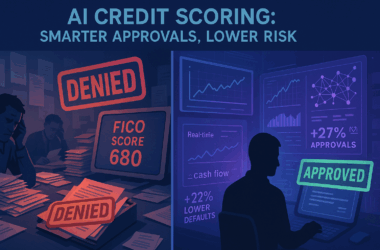The credit score is a very important figure that everyone needs to be aware of. This single figure can determine your access to financial products and services. There is absolutely no reason to take this figure lightly. Lenders use your credit score to determine your creditworthiness, moderate to high credit scores are seen as creditworthy scores whereas scores lower than 500 or around 300-400 mark are considered high risk.
A recent study has shown that almost 30% of individuals in the USA have suffered from deterioration in their credit scores over the course of the last ten months. The Economic crisis caused by the coronavirus pandemic has been very tough on many people. People have lost their jobs and savings, many have had their long term plans affected by the ongoing pandemic and the financial crisis.
Failure to pay the debts and bills on time can impact the credit score very negatively and if any person, unfortunately, gets bankrupt in the process, then bankruptcies can deal a fatal blow fo the credit score.
Improving the credit score, however, is not impossible. It may be a daunting task for someone with bankruptcies and delinquencies in their credit history. It may not be so difficult for someone with only a low score and no bankruptcy, delinquency or court order. Nevertheless, it is possible to improve the credit score and in this article, we shall try to look at 6 ways of improving the credit score.
Table of Contents
1- Determine the reason for the low/bad credit score
Firstly it is very important to determine why your credit score is low. If there have been bankruptcies, delinquencies or court orders in the past then, the reason does not even need to be investigated. It is at this point important to understand the difference between the three terms used in the last sentence.
Delinquency: Delinquency occurs when an individual misses the payment of a debt on time. As soon as a borrower misses a payment on any debt, delinquency technically occurs. Lenders may have their own policy to allow borrowers some grace time to pay before they can declare them as delinquent.
Bankruptcy: Bankruptcy occurs when a lender legally moves against the borrower, to recover payment through collateral, security or claim on assets. Bankruptcy proceedings begin when a petition is filed against the borrower in the court of law.
Court Order: Court orders are passed at the end of a bankruptcy proceeding. Once a court order is passed, it damages the credit report in a very grave manner. Most lenders do not lend out to borrowers with court orders in their credit report, for a number of years.
If these do not occur and your credit score is still low, then it would be better to have a look at your credit report. A good place to start is the annual credit report website, which can be used to pull credit reports from each of the three credit bureaus once a year. Having a look at the credit reports can give useful insights into what is working and what isn`t.
2- Pay bills on time
This is a no brainer. Try to pay the utility bills on time. Timely payments of bills and debts is a crucial factor in keeping the credit score in the upper ranges. The first thing that lenders look for is payment habit. If you have a habit of paying your bills on time, this will register as a good personal financial management habit and the lenders will therefore consider your creditworthy.
3- Manage the card utilization
This is one thing that many people do not realize. Card utilization plays a very important part to keep your credit scores high. According to market analysis and expert opinion, it is always good to keep card utilization between 25% and 30%. 10% card utilization is considered as optimal utilization for individuals looking to build their credit score. Utilization levels higher than 30% to 40% generally register negatively on the credit report.
What is card utilization?
Credit cards have a credit limit. For instance, if your credit card has a credit limit of $10,000 then it means that you can purchase up to $10,000 using your credit card. Go above this limit and your card will be declined. It is never a good idea to utilize a card at 100%.
Keeping this utilization around 35% is considered as a positive habit and registers positively on the credit report. Higher utilization simply means that the person is highly dependent on credit and therefore is overspending. This is a red flag for lenders in terms of creditworthiness. Card utilization should therefore be kept low, around 35%.
4- Use multiple cards
Keeping credit utilization at optimal levels can be difficult for individuals who have to frequently use their cards and also have the means to afford high credit usage. A better option for such individuals is to go for multiple cards. Why keep a single credit card when you can have two or three credit cards?
Using multiple credit cards will allow such individuals to optimize their utilization levels and at the same time, it will help them jack their credit scores.
5- Negotiate higher credit limits
This may be a tricky thing to do if you already have a low credit score. The thing, however, is that if you have got the income to back your claims, then you can try negotiating for a higher credit limit on your lines of credit. It is helpful to be on friendly terms with the bank manager, as in most cases having personal connections can get things done that would otherwise not seem possible.
6- Track your credit score
There are paid and free applications that can help you track your credit score. It is advisable to get such an application and use it to monitor your credit score on a weekly or monthly basis. Doing so can let you know what is working for you and what isn`t.
By following these 6 steps, you can rebuild your credit score and once again get access to top of the line financial products and services. Rebuilding the credit score also requires financial discipline. Rebuilding the score is not enough, one must also look at the reasons why their credit score deteriorated in the first place. The reason in most of the cases is overspending and poor financial habits, that must be changed in order to keep the credit scores stable over time.
















Recent Comments